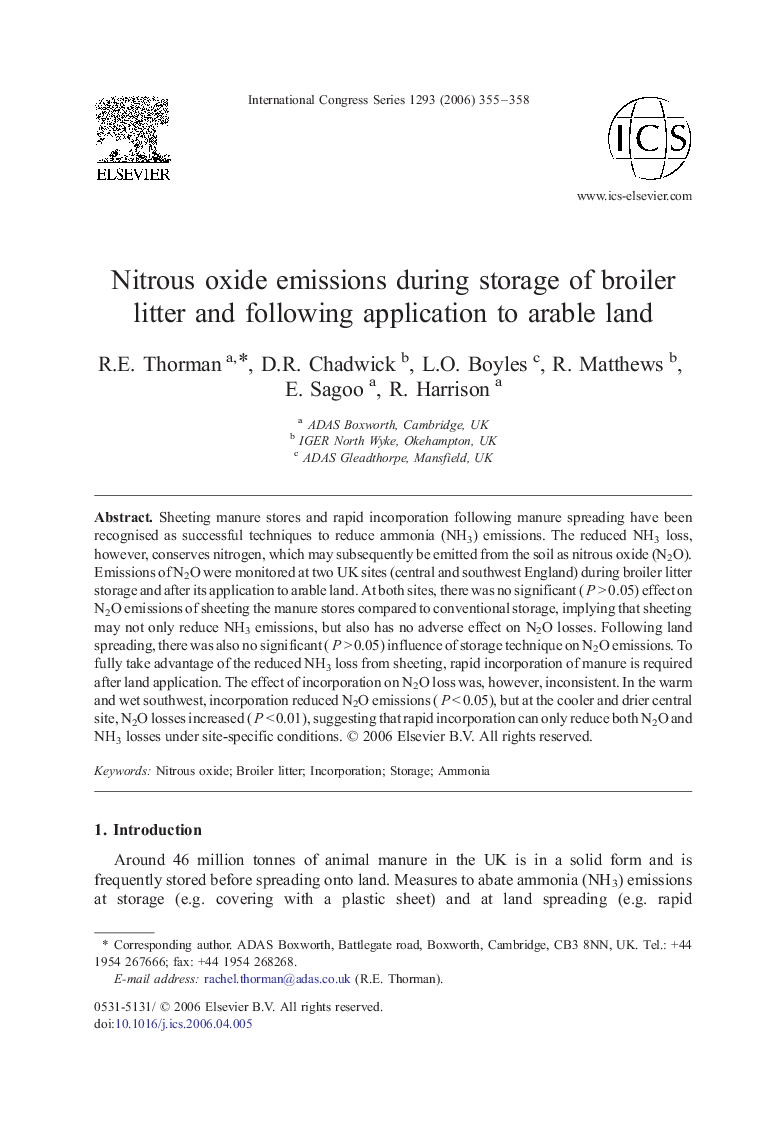| Article ID | Journal | Published Year | Pages | File Type |
|---|---|---|---|---|
| 2577114 | International Congress Series | 2006 | 4 Pages |
Abstract
Sheeting manure stores and rapid incorporation following manure spreading have been recognised as successful techniques to reduce ammonia (NH3) emissions. The reduced NH3 loss, however, conserves nitrogen, which may subsequently be emitted from the soil as nitrous oxide (N2O). Emissions of N2O were monitored at two UK sites (central and southwest England) during broiler litter storage and after its application to arable land. At both sites, there was no significant (PÂ >Â 0.05) effect on N2O emissions of sheeting the manure stores compared to conventional storage, implying that sheeting may not only reduce NH3 emissions, but also has no adverse effect on N2O losses. Following land spreading, there was also no significant (PÂ >Â 0.05) influence of storage technique on N2O emissions. To fully take advantage of the reduced NH3 loss from sheeting, rapid incorporation of manure is required after land application. The effect of incorporation on N2O loss was, however, inconsistent. In the warm and wet southwest, incorporation reduced N2O emissions (PÂ <Â 0.05), but at the cooler and drier central site, N2O losses increased (PÂ <Â 0.01), suggesting that rapid incorporation can only reduce both N2O and NH3 losses under site-specific conditions.
Related Topics
Life Sciences
Biochemistry, Genetics and Molecular Biology
Molecular Biology
Authors
R.E. Thorman, D.R. Chadwick, L.O. Boyles, R. Matthews, E. Sagoo, R. Harrison,
